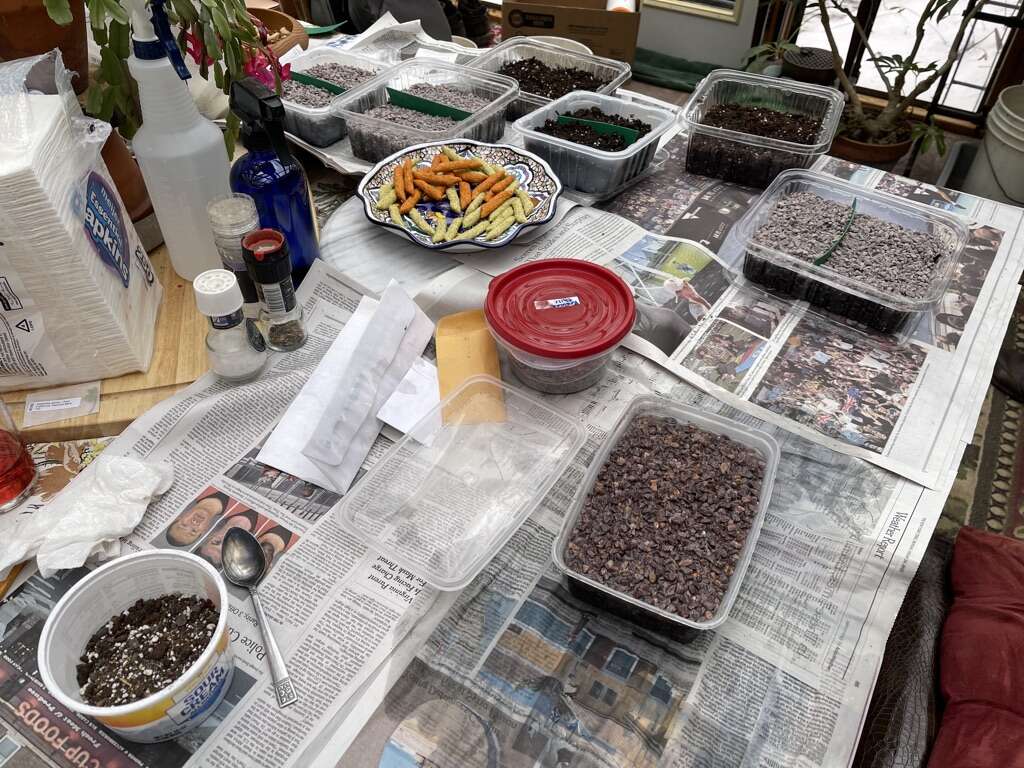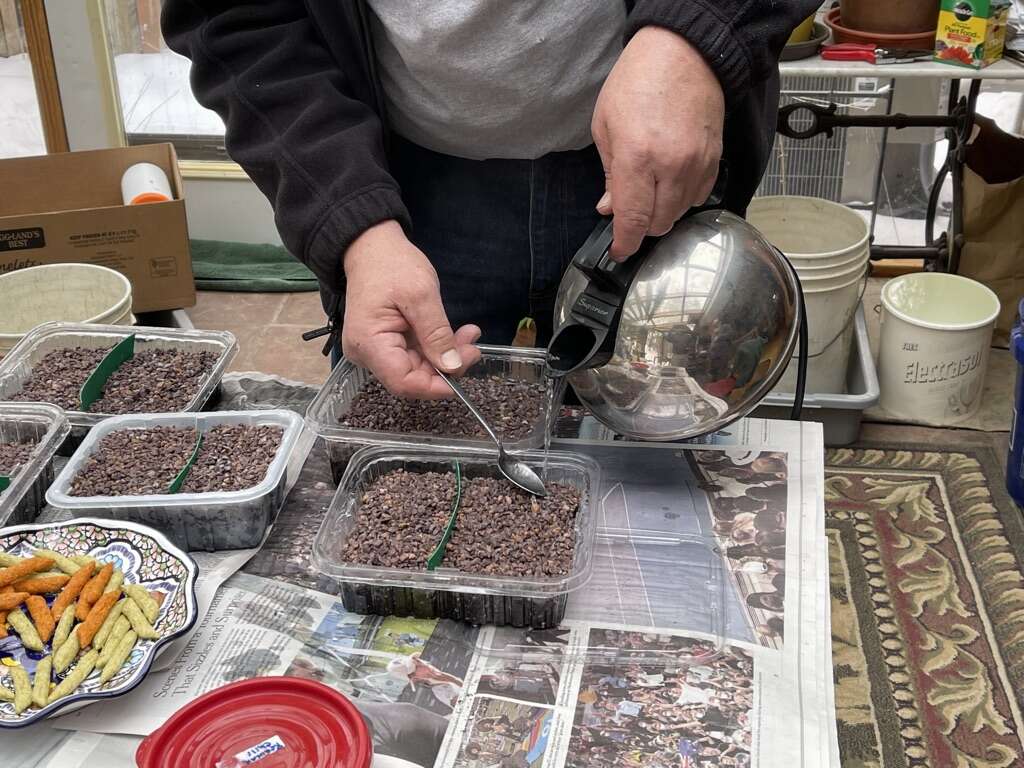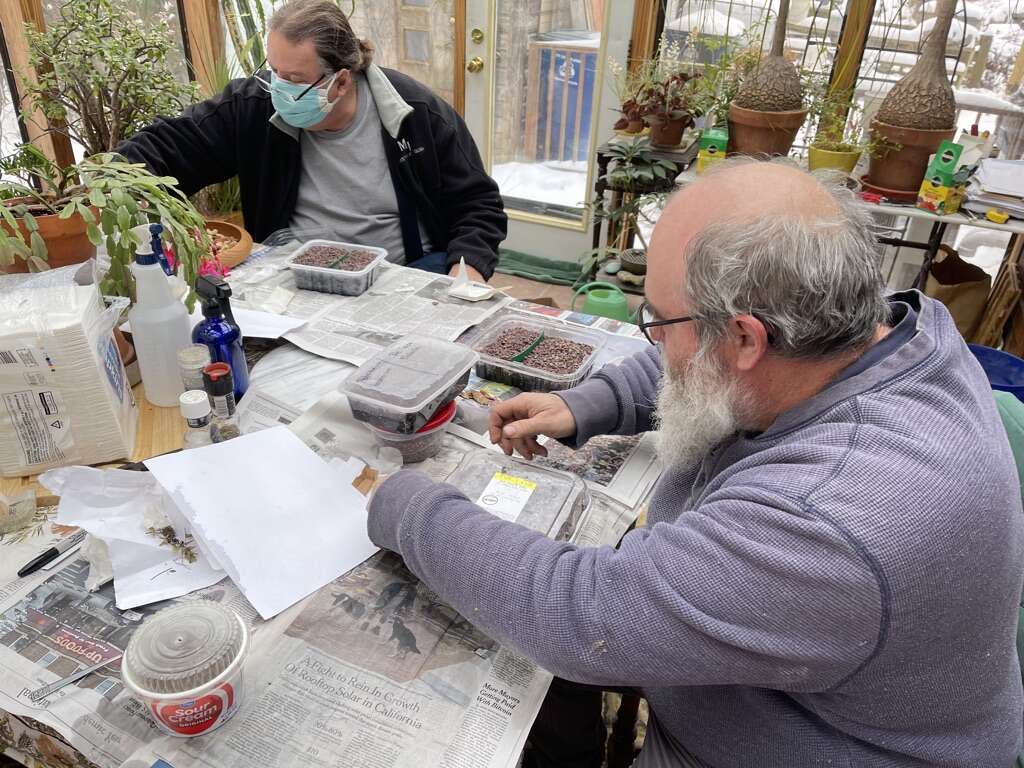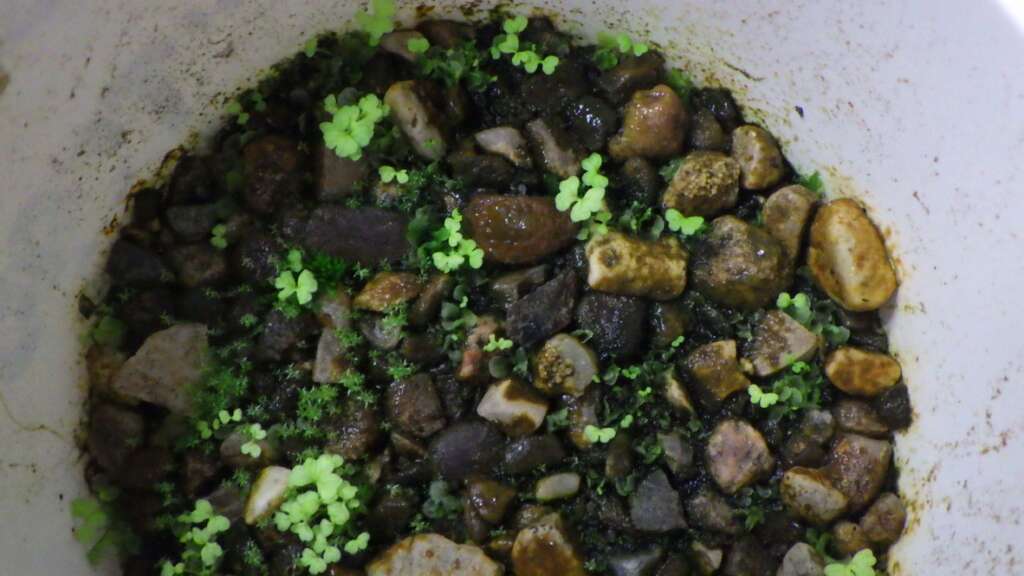It’s late January, too cold outside for doing much in the garden except for keeping the bird feeders topped off and looping the dogs around the property. Several weeks ago my buddy Don La Fond and I were having an extended telephone conversation. One of the topics was the impending arrival of our NARGS seed orders, the discussion evolved to old (as yet unsown) seed, and from there, to a growing collection of fern spore packets.
I have been amassing a smallish assortment of dried, fern-leaf sections that I’d either gotten thru the annual NARGS Seed Ex., or else from ferns that I’d come across growing in the wild. All of these bits of botanical “promises” were stored in glassine envelopes some of which dated back to the mid 2000’s.
Don had a couple of his own fern packets, and we agreed we should check with Tony (Reznicek), to see if there was a time when the 3 of us could get together and make an afternoon of sowing fern spores, and that happened yesterday.
With Tony house being the halfway point and his sun-room an ideal venue for our project, we joined forces there.
Each of us had brought our own planting containers.

We added 2-2.5” of wetted, commercial potting mix into each container, lightly firmed down and leveled, and then top dressed with #3 crushed granite grit.

.


Using a permanent marker, Don & I wrote the names of the fern species and date onto the the outside of the lid, above each cell into which the corresponding fern spores were sown. I think Tony placed a plastic label with the corresponding info into each of his containers.
Once all of the fern spores were sown and the lids were secured, clean-up simply involved collecting markers, scrapers and spoons, and then gathered up everything that remained by rolling up the newspaper that covered the work table. The “planted” containers go under lights and in a couple of weeks or so, they’ll have to be checked to see if the Prothallia are starting to form. The indicator of this will be a greenish film or cast forming within the gravel. At this point spraying the surface of the gravel with a mist bottle will be required in order to lay down a film of water which will allow the gametes to swim in and merge.

Tony had brought up the container (pictured above) that he’d sown spores into several weeks ago, of a Glade fern. The pale green, multi leafed plants are the growing Sporephytes. They will grow on into young ferns. The darker green, almost liverwort-looking plant growths (seen in the central area of the picture) are the mature prothallia or gametophytes, from which the gametes are released. Or this is my best understanding of the process. There is a good bit of moss growing in the container as well, but Tony says that at this stage, the soon-to-be young ferns, will be able to outpace the moss until it’s time to pot the ferns up individually.
All in all it was great to have a short get together and get a quickie chlophyll-fix in Tony’s sunroom!
All images courtesy of Tony Reznicek.
